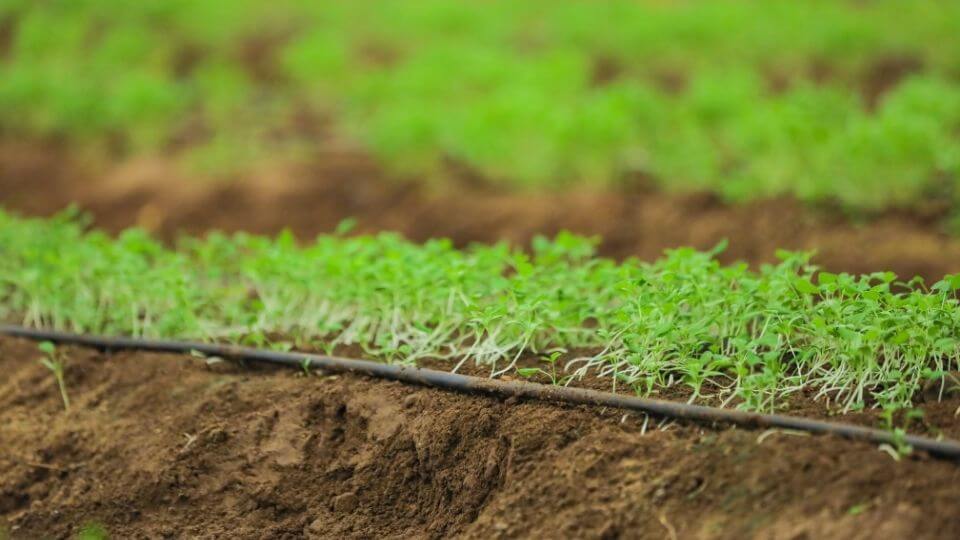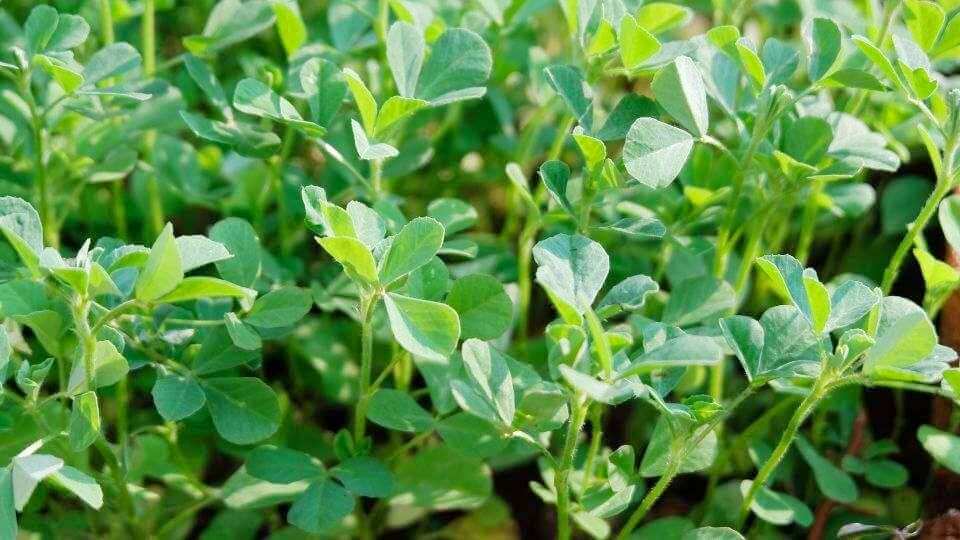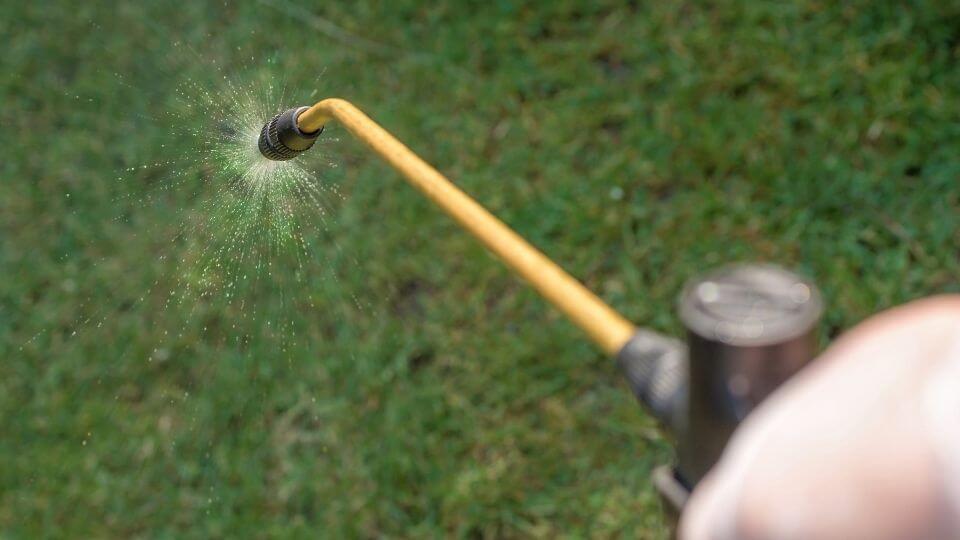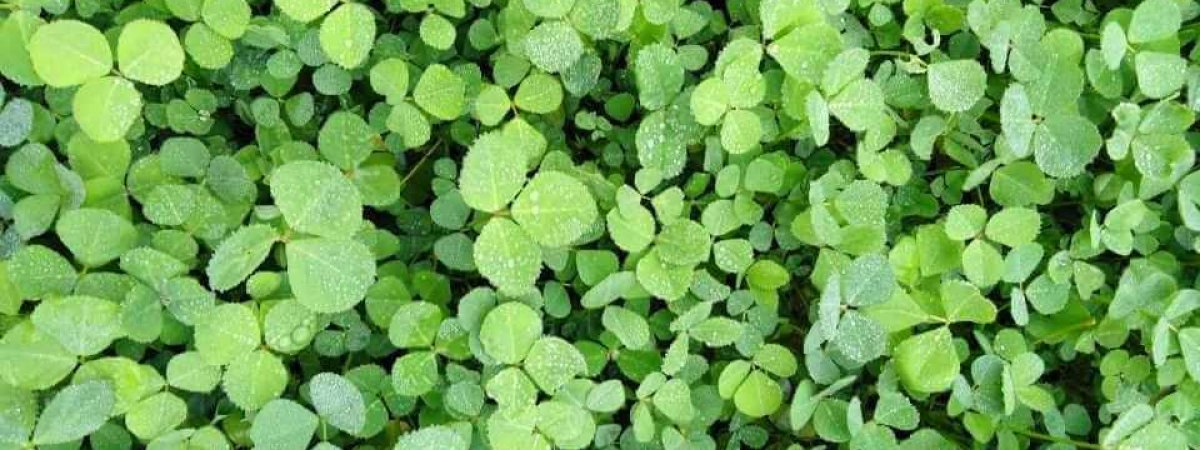Fenugreek or Methi (as it is called in India) look very similar to clover leaves and their flowers closely resemble common peas. The average height of methi plants is 2-feet, growing from a single stem that branches from the base.
Methi/fenugreek leaves are small having three ovate green to purple leaflets on each. From the leaf axis, solitary white, purple, and yellow flowers grow. Both the brown seeds and green leaves of methi plants are edible.
Methi plants have yellowish-brown seeds with a relaxing aroma and used in culinary applications. Along with its use in culinary practices, fenugreek/methi has been a crucial ingredient in traditional medicine.
Growing methi plants is not a difficult task but you need to take care of the growing conditions, such as climate, soil, location and other essential factors. Let’s learn about how to grow fenugreek at home!

Methi Plants
You can grow methi both indoors and outdoors, based on the available space and of course your choice. If you wish, you can grow it on the patio, balcony, rooftop or terrace, along with other greens like spinach, lettuce, etc.
How to grow fenugreek
- Start by making a methi (fenugreek) bed. It’s your choice how you want to grow it – alone or with cilantro.
- It can be cultivated from seeds and is easier for beginners. Now, you better understand what suits you!
- Sow the methi seeds ¼ inches into the well-prepared potting mix in the desired area. If you are growing methi in a container, the details are mentioned in the next section.
- Make sure you sow the seeds during a cool climate, but not in the dangers of frost.
- Fenugreek (methi) doesn’t like the process of transplantation. So, leave at least two inches of space between the plants.
- Methi seeds sprout fast. You will notice seedlings growing within two to five days.
Note: If you have purchased the seeds from a grocery store, soak them overnight to improve the germination rate. However, you can always sow them directly.
Growing methi plants in containers
- Growing fenugreek in containers is a great idea if you lack proper space in the garden. The growing process is almost the same as any other green vegetable.
- Take a wide yet shallow container that is 6-8 inches deep having good drainage.
- As the plant has shallow roots, it doesn’t mind the low-depth container.
- Now, add a rich potting mix. To the potting mix, you can also include 1/3 part with compost or well-rotted horse or cow manure.
- Sprinkle seeds all around the pot and add a thin layer of soil to cover them.
Note: Leave one to two inches of spacing between seeds. However, when growing as a microgreen, you need not worry about the spacing.
Growing conditions for methi plants
Climate and temperature: Methi thrives in a warm and hot climate in a temperature range of 10°C to 32°C. If you are planting it for seeds, make sure to plant it in early summer or spring.
When the idea is to use it as a vegetable or herb, anytime from spring to mid-fall is favorable for healthy growth.
People living in zone 9-11 or a warmer region with frost-free winters in the outskirts of the United States, you can grow fenugreek throughout the year!
Location: Methi plants demand neutral to alkaline soil for proper growth. The pH level should be around 6.5 to 8.2. Ensure planting it in a location that receives a minimum of 4-5 hours of bright and direct sunlight and shade during the afternoon.
Choose a sunny spot if your area experiences a colder climate that is not too intense.
Watering: Water your methi plants (fenugreek) frequently to keep them moist. However, do not overwater or waterlog the soil as it may disrupt the plant’s growth. When growing methi plants indoors, be careful about watering.
Fertilizer: There’s no need to use fertilizers extensively for growing fenugreek. While planting methi, add manure or compost or even time-based fertilizer may work well in soil preparation.
You must feed the plant with liquid fertilizer in a balanced amount for faster and robust growth.

Harvesting methi plants
- These fast-growing annual yield leaves are mature and all set for harvesting within the period of 20 to 30 days from sowing.
- Carefully, trim the leaves and snip off the top third of the mature stems, and let the rest keep growing.
- It promotes branching which gradually boosts seed production and flowering.
- Once you cut the leaves, they will regrow in around two weeks. You can harvest the leaves several times before flowering begins.
- As the plant bolts and initiates seed production, the leaves turn bitter and tough.
- For methi seeds harvesting, you need to have more patience.
- Harvest the seeds after 3 to 5 months from planting them. The right time is when the plant has finished flowering, died back, and starts turning yellow.
- The methi seeds grow within the small pods, each containing around 10-20 seeds.
- Collect the pods by snapping them off from the stem. However, do not tear them or the seeds will everywhere.
- Peel open the pods to get the yellow-brown seeds. Alternatively, you can rub the pods between your palms to take out the seeds.
- Store the seeds in an airtight container and keep them in a cool, dark, and dry place. They can last up to two to three years.
- Methi seeds are vitally used in Indian cooking.
Storing fenugreek
- The fresh methi leaves can be stored for a week once removed from their stalks.
- Wrap them in a paper towel and store them in an airtight container in your refrigerator.
- Fenugreek leaves fresh or dried) can be used in tea or as a herb in cooking.
- To dry the leaves, hang them upside down in bundles in a dark and dry place. If that’s not possible, try using a dehydrator or dry them on the ‘warm’ setting of your microwave.
- Once the leaves are completely dried, pluck the leaves from the stems and store them in an airtight glass container in a dark place.
- Fresh methi leaves can be frozen for almost ten months. Pluck the leaves from the stems, chop them roughly and loosely wrap them in an aluminum foil. Now, parcel the wrapped foil into a Ziploc bag in the freezer.
- Right before use, remove the foil, wash the leaves and start cooking!
- When you wish to use fenugreek seeds as a spice, you can dry roast them on medium flame to get the nutty aroma and flavor. Remember to keep stirring it regularly to avoid burning.
- Never over roast the methi seeds or it will get bitter.
Some people also use grounded seeds in cooking. However, you need to be extra careful and carry out some pre-preparation. Here’s how you can grind methi seeds:
- Soak them overnight in water.
- Drain and dry with a paper towel.
- Heat a frying pan over a medium flame. Add the seeds and stir frequently. Roast until the color gets dark.
- Add them to a grinder and powder them.
- You can store the powdered seeds for a year when kept in an airtight jar in a dark and cool place.
Pests and diseases affecting methi plants
When growing methi plants in your home garden, the chances of pest infestation increases. We have got you all the information on the potential diseases along with a solution to the problem. The plant mostly gets affected by diseases during humid or warm conditions.

Aphids
Aphids are small pests that feed on a plant’s sap and suck juices of the soft parts of methi plants. It affects the growth and increases the chances of honeydew contamination. To combat these infestations, use homemade insecticidal soap or neem oil.
Root rot
A fungus that leads to yellowing of methi leaves, stunted growth and wilting. Soon after your methi plant succumbs to root rot, it will die. To treat the condition and prevent serious damage, pull the lant out and check the roots.
You can prevent root rot by planting in well-drained and warm soil.
Powdery Mildew
Mildew affects methi plants as they mature over time – during warm weather and dry foliage. When you see white powdery spots on the upper and lower surfaces of leaves and flowers, know that it’s mildew disease.
Applying neem to the affected area works great to combat extreme problems.
Charcoal Rot
Charcoal rot is a plant disease that can cause cankers and discoloration of the stems, spreading upward and wilting the leaves. Finally, your leaves may drop and fall off eventually. The fungus thrives in hot and dry regions during the growing season of the crop.
It only infests the plants that go through heat stress. To keep this stress away, sufficient weeding and thinning of plants, including the addition of composted manure (aged) into the beds before planting, mulching to retain moisture, and frequent watering during dry weather is essential.
In a Nutshell
Methi plants are easy to grow in a container or your garden. Growing your greens in the backyard or garden can not just allow you regular access but create a healthy and fresh environment at home.
Now that you know how to grow fenugreek, you can experiment with turning your garden fresh and greener!
Image Descriptions:
Featured Image: methi plants can be grown both indoors and outdoors, depending on the space available at your home. We got you all the information on growing method seeds!
While growing metho seeds at home, make sure to prepare your soil. Use a potting mix with aged manure to ensure the healthy growth of your methi plants.
When it comes to harvesting methi plants, you need to have ample patience. Harvest methi seeds after three to five months from planting and store them well.
Certain pests and diseases can affect your methi plants in the garden, such as aphids, root rot, charcoal rot, and powdery mildew. Here’s how to deal.






